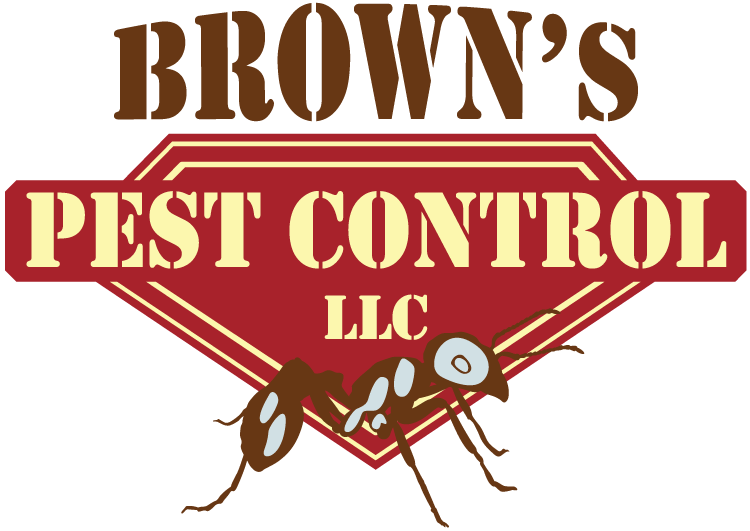When your home is infested with rodents, it can often feel like you’re going crazy.
You know something is off. You swear you can hear scraping and scratching sounds at night. Plus, you’re pretty sure you saw something scamper through the kitchen out of the corner of your eye last night.
When it comes to finding concrete evidence of a rodent infestation, however, you have no idea how to start confirming your suspicions.
If you know what to look for, mice and rats leave behind clues that they’re squatting in your cozy home.
Here are ten signs that you might be sharing your abode with these uninvited fuzzy houseguests.
Droppings
If you’ve opened your drawer or cupboard to find small pellets that look like black grains of rice, you’ve likely spotted rodent droppings.
Mice leave in their wake an average of 50 to 75 droppings per day. The amount of feces alone that rodents produce makes this an easy way to tell if they’re in your home.
Though they’re an icky inconvenience, you can actually learn a lot from these droppings. (Be sure to handle any feces with safety gloves.) If it’s fresh, the pellet will be dark and moist with a putty-like texture. As it ages and dries out, it will turn to a greyish color and may crumble if touched.
You can also learn from droppings whether your place is home to rats or mice. Mouse droppings are only about an eighth of an inch long. On the other hand, rat pellets are often over half an inch in both diameter and length.
Pay attention to the location where you’re finding droppings. You’ll spot more pellets where rodents are nesting or feeding. This can give you a clue as to where to start your extermination.
Gnawing Marks
If you think going to the dentist is bad, imagine having to care for teeth that never stop growing.
This is the plight of mice, rats, and other rodents, and the reason why they often leave chew marks in their wake.
Rodents will often gnaw on whatever is close by to keep their teeth at a manageable length. Unfortunately, when they’re occupying your home, this means your belongings will become chew toys.
If you suspect your home might have a rodent infestation, take a closer look at any wooden furniture or materials. Fresh gnaw marks will be light in color and darken with time. Large marks may be indicative of a rat infestation; smaller chew marks could mean mice.
If you’re finding gnaw marks in an area with any nearby cords or cables, watch out. Rodents love to chew their way through electrical cords. This danger can make rodents be considered a fire hazard.
 Musty, Unpleasant Odor
Musty, Unpleasant Odor
Rodents are inherently smelly creatures.
Because their vision is lacking, many rodents rely largely on their sense of smell to find their way to and from the nest. Unfortunately, one of the ways they do this is by tracking and following the odor of their own urine.
If you’re noticing a strong ammonia odor in specific areas of your home, a rodent nest may be nearby. They follow the same paths to navigate through their territory, and this is marked by their urine. Particularly in enclosed spaces, the presence of this stinging aroma can be a sign that you may have stumbled into a rodent’s territory.
You may also notice the odor of droppings. This is the ammonia smell that’s a telltale sign of a rodent infestation.
Pungent Rotting Smell
On an instinctual level, the smell of death will turn your stomach like no other. It’s how our bodies protect us from danger — both from falling victim to the cause of death and from the diseases that could come from a decomposing corpse.
Though it may seem like the easiest fix to the problem, having a mouse or rat simply die in your home can turn into a nightmare. As the body slowly decomposes, the smell of methane, sulfur dioxide, and other chemicals are released into the air. This smell is designed to attract carrion eaters and can render an entire area of your home essentially unusable.
Conduct a search in the area where the odor is most permeating. If you find rodent remains, here’s how to handle it.
Put on safety gloves and a mask. Mix a solution of ninety percent water and ten percent bleach.
Spray the body and surrounding area with bleach solution. Place the body in a plastic bag, and seal. Don’t push out excess air, as this could spread any bacteria or viruses the rodent could be carrying. Place this bag in another sealed bag.
Spray the area again, and wipe everything down with paper towels. Dispose of them in a sealed plastic bag.
Wash your gloved hands with disinfectant soap, dispose of gloves, and wash hands again. You can’t be too thorough.
If checking cupboards and furniture doesn’t render a body, your problem could be hiding in a wall or a duct. Seek help from a professional if this is the case, to avoid dangers like electrocution or further damage to your home.
Increased Allergies
Though rodent infestation might not be on your radar as an allergy trigger, it very well could be the cause of those annoying sniffles.
Rodent hair, urine, and droppings contain a protein that can cause an allergic response in humans when found in the home. Saliva and dander can also cause sneezing and sniffles. Research shows a direct link between allergies caused by rodents and increased asthma symptoms.
There are many ways that rodents can cause allergy issues. It’s no wonder that ninety-seven percent of allergists agree that a pest-free home is a vital component to managing asthma symptoms.
Strange Pet Behavior

If your cat or dog begins acting strangely in a certain part of the house, this could be a sign that a rodent infestation is nearby.
We all know that cats and mice are species-wide enemies, but it turns out that your feline pal is a lot more likely to hear a mouse’s tiny squeak than you are. Human ears don’t pick up on sounds higher in frequency than twenty kilohertz. Cats can hear up to sixty kilohertz, making them much more likely to hear the often-ultrasonic squeaks of tiny mice.
If your dog keeps trying to wedge his nose into a cupboard or won’t stop scratching at the wall, he could be on to something. His sense of smell is about forty times better than yours, and he might know about your unwelcome visitors long before you do.
Keep an eye on your pets’ behaviors. Sometimes their instincts can lead you on the right path to confirm your suspicions of a rodent infestation.
Tracks and Trails
Sometimes, your furry intruder will give its own presence away.
Rodents often use the same paths to gain access food sources. Figuring out where their runways are can lead you in the right direction.
If you suspect that you might have a rodent infestation, check the bottoms of your baseboards and walls. Mice have incredibly oily coats, and they can make a mess on your white surfaces.
If you notice a smudge or smear along the bottom of your walls, you may have found a spot that gets rubbed against on a regular basis.
Once you think you’ve located a rodent’s runway, confirm your suspicion by doing a little detective work. Sprinkle a very thin layer of flour or baby powder along the potential path, and check in the morning for tiny footprints.
A mouse’s feet will measure in at three-eighths of an inch each or less. A rat’s feet will be slightly larger at about an inch or just under.
Rats also drag their tails when they run, leaving a trail behind them.
Noise
Mice are nocturnal creatures, and can often be heard scurrying through the walls as their unknowing host is trying to sleep.
When the rest of your household is asleep, try creeping around your home to see if you hear anything out of the ordinary. You may notice scratching through cupboards, squeaking under furniture, or any number of tiny giveaways. You may even hear rodents fighting for nest space if your infestation is severe enough.
Simply listening to your surroundings for a moment can lead you straight to the source of your rodent infestation problems.
Nests
Just like us, rodents love a cozy bed to snuggle in.
Rodent nests are small clusters made from soft materials and measure roughly five inches across. They grab bits of furniture stuffing, shredded paper, fabric, and whatever other fuzzy particles they can get their hands on.
These nests are usually built in a safe, dark place near the rodent’s food and water sources, and provide a home for babies. If the nest has any signs of droppings or odor, it’s likely been recently used.
This is a telltale sign of rodent infestation.
Holes
Mouse holes are a real thing to watch for in your home. They don’t however, look like the neatly carved arches in the baseboards of children’s cartoons.
Mice often use existing entries to sheltered areas, but they can also build their own. Rodent holes tend to be only about half an inch to an inch high and can be difficult to spot if you’re not looking for it. They are generally found near baseboards, wall corners, and under cabinets.
Do You Have a Rodent Infestation?
Knowing what an infestation looks like is the first step ridding your home of pesky intruders once and for all. Contact us to see how we can help with your rodent control needs.
Solve Your Pest Problem
Call Brown's Pest Control
